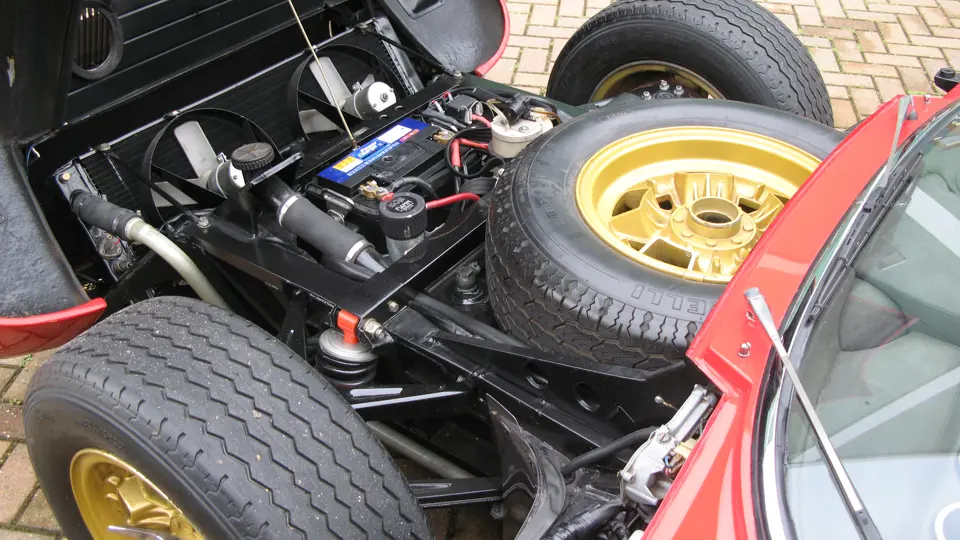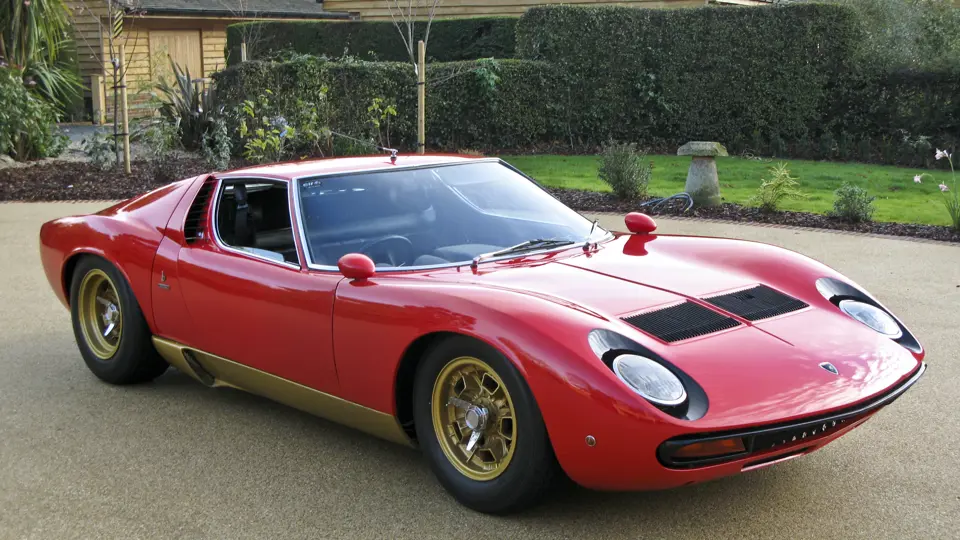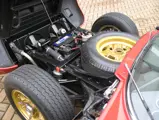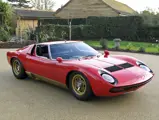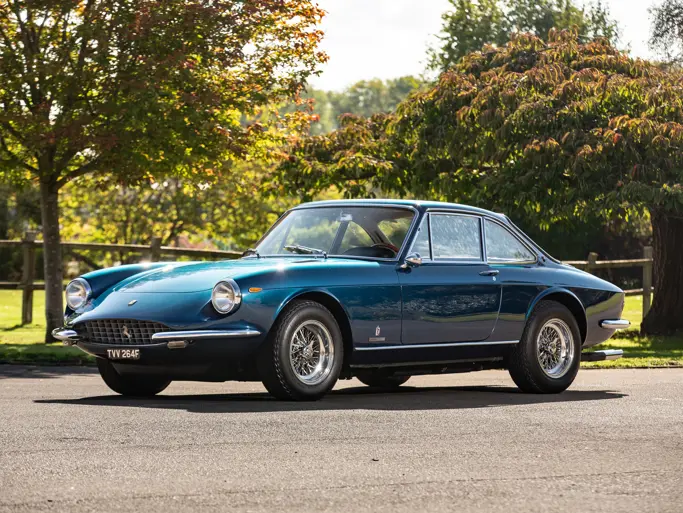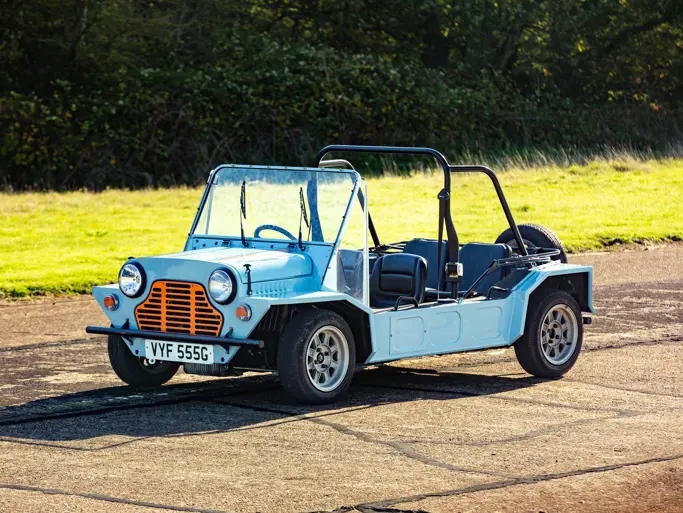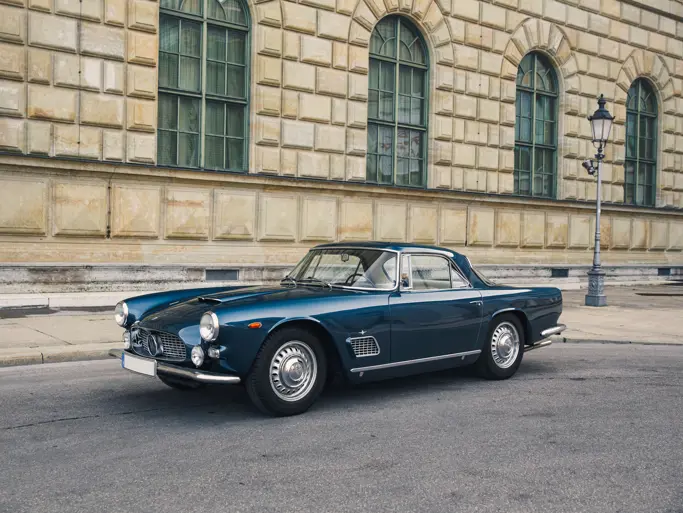385 bhp, 3,929 cc transverse mid-mounted alloy DOHC V-12 engine, Weber twin-choke carburettors, five-speed manual gearbox, independent front and rear suspension with A-arms, coil springs with tubular shocks and anti-roll bars, and four-wheel hydraulic disc brakes. Wheelbase: 2,500 mm
• The ultimate-spec “SV” variant of the original Italian supercar
• Recently rebuilt V-12 with only an approximate 100 miles since
• Highly desirable and rare original features including A/C and factory fitted radio
• Very rare cloth upholstery and Alcantara dash
This was where it all started, the first production ‘supercar.’ Offering massive speed and jaw-dropping design, race-inspired technical innovation and a wallet-wilting price tag, the Miura electrified the March 1966 Geneva Salon. Named for an infamous fighting bull, the Miura was the after-hours brainchild of seven young engineers including, Gian Paolo Dallara. While some name Bertone’s young Marcello Gandini as the designer of the Miura’s sinuous, lightweight aluminium body, others credit Giorgetto Giugiaro.
The specifications are still impressive today: a lightweight frame, an all-independent suspension, four-wheel disc brakes and an exotic DOHC V-12 engine with Weber carburettors. Capable of nearly 180 mph in the hands of the brave, the Miura continues to intoxicate today.
Constant evolution brought the S (spinto or tuned) version in 1968, followed by the ultimate, 385 bhp SV (‘S’ for spinto, ‘V’ for veloce or speed) that debuted at Geneva in 1971. The SV featured greatly improved handling, ventilated disc brakes, nine-inch Campagnolo wheels, fat Pirelli tyres, aggressively purposeful body modifications and a leather-trimmed interior. During the autumn of 1971, an optional limited-slip ZF differential became available, and dry-sump lubrication appeared. All told, the Miura SV was simply the fastest production vehicle on the planet. Just 150 were built and production ended in early 1973, although the last deliveries were made that autumn.
CHASSIS 5036
This 1972 Miura SV was completed on 23 February, 1972, and it is the 717th of the 765 Miuras produced in total. Original features included a Rosso Corsa exterior finish, factory-fitted air conditioning, a limited-slip differential, a radio pack and super-rare cloth interior trim with an Alcantara dash. Interestingly, 5036 is one of precious few known Miuras produced with luxurious Alcantara dash material, and this treatment was continued on the subsequent Countach.
It was bought from the factory in 1972 by the Australian Lamborghini importer along with Miura 5002. Both were already with dealers, with 5036 having just been delivered to Rigetti in Italy. As the factory was keen to save time and maintain cash flow, 5036 and 5002 were returned to the factory and converted there to right-hand drive, and prior to shipment to Australia, they were reportedly UK-registered for tax purposes.
Once in Australia, this SV, 5036, was acquired by Laurie O’Neal of Sydney, a well-known enthusiast who almost immediately sold it to Peter Opie of Sydney, New South Wales, who retained it for few years before selling it to Gerry Kent. The Miura remained with Mr. Kent nearly 33 years, and following his death in 2004, his wife sold it to Lamborghini Australia. In a tired state at the time, 5036 was re-commissioned by the dealer at great cost, with the works performed by a Lamborghini specialist mechanic in Queensland, with the bills adding up to approximately AUD 100,000. The work included the removal of the fuel tank and all fuel lines, refurbishment of the fuel tank, repairs to the floor sections underneath the tank (a common problem), a complete suspension refurbishment and the cleaning and recoating of the chassis. The engine was fully checked over, and the cylinder heads were overhauled with the camshafts reground. In addition, the air conditioner was overhauled and re-gassed, the brake lines were renewed, and new brake discs and pads were fitted.
The next owner acquired 5036 in 2006 at approximately 48,000 miles. He reports that he used the Miura for a number of outings and events prior to commissioning a Melbourne-based specialist to completely rebuild the engine at a cost approaching AUD 100,000. The original pistons were found to remain virtually perfect, and new rings were fitted. The crankshaft was machined and reground, the cylinder heads were rebuilt, the engine bay received an engine-out detailing, and the cooling system was refurbished. In addition, the air conditioning system was serviced and re-gassed, the ignition system was refurbished and properly set up, and a new set of tyres was installed.
As offered today, the Miura SV remains in highly original and correctly-maintained condition, with its rare and highly desirable original specifications including factory-fitted air conditioning, a limited-slip differential and a factory fitted radio. Its original Rosso Corsa exterior finish remains mostly original, and with the rare cloth upholstery and Alcantara dash, it is a fascinating late-production example. With only an approximate 100 miles travelled since the lusty V-12 ‘SV’-spec engine was rebuilt, the new owner of this car will find himself in the enviable position of owning a super-rare, high-spec and original example of the ultimate development of the original supercar.


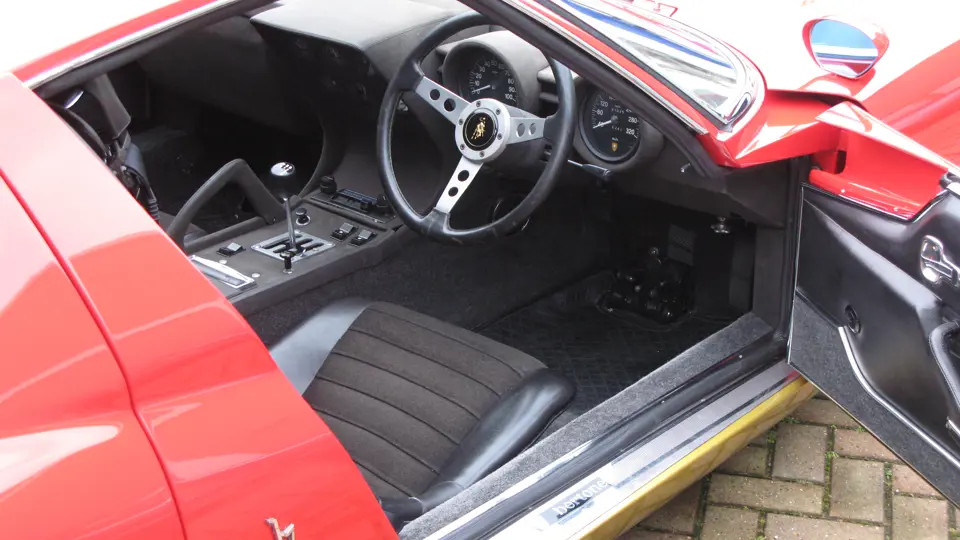

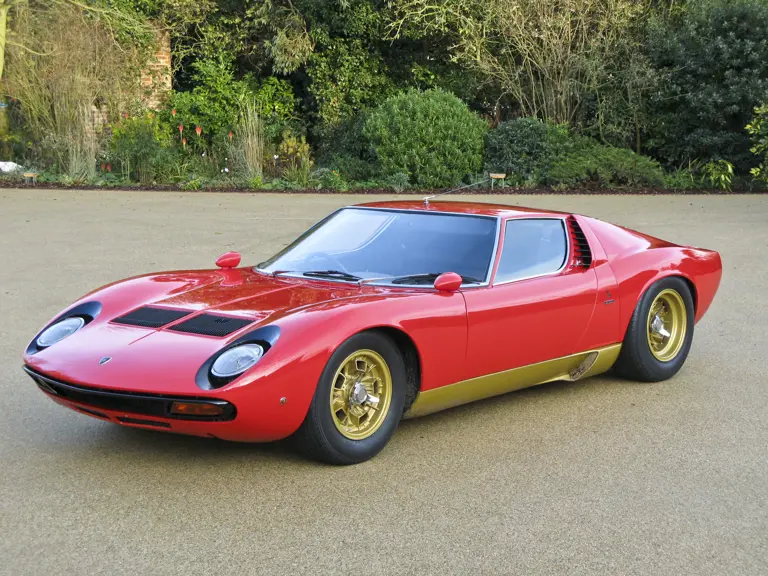
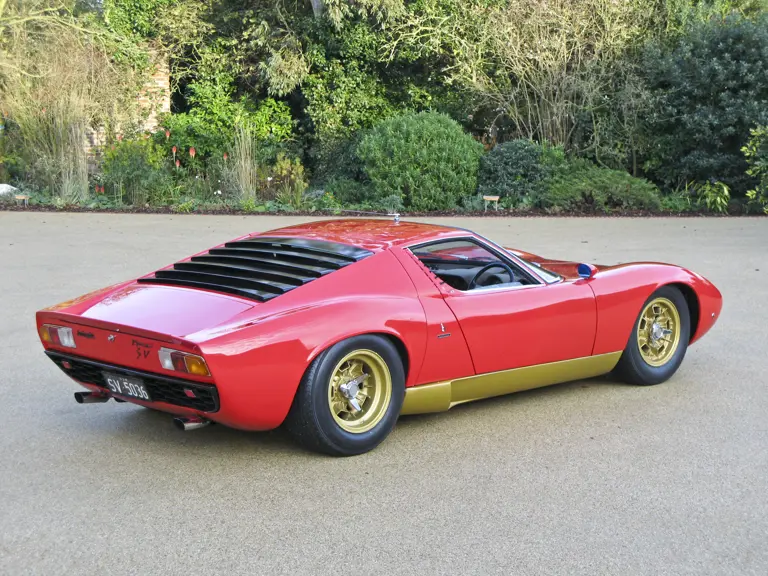


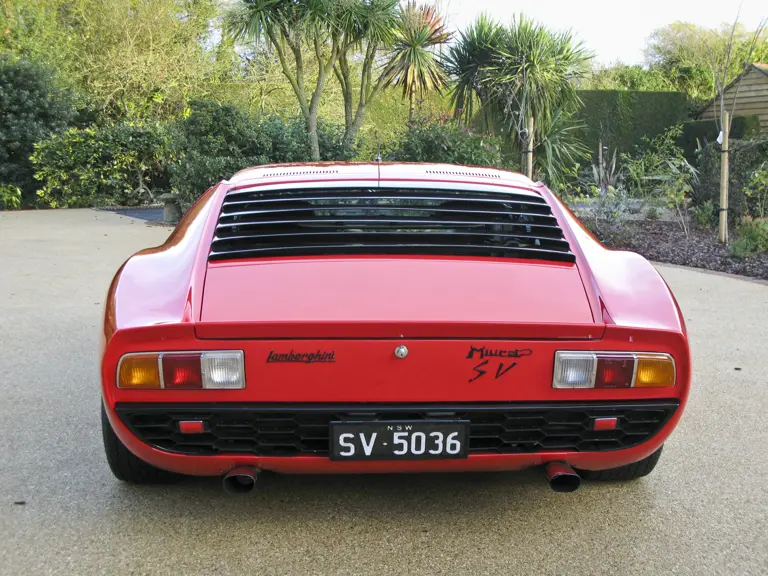
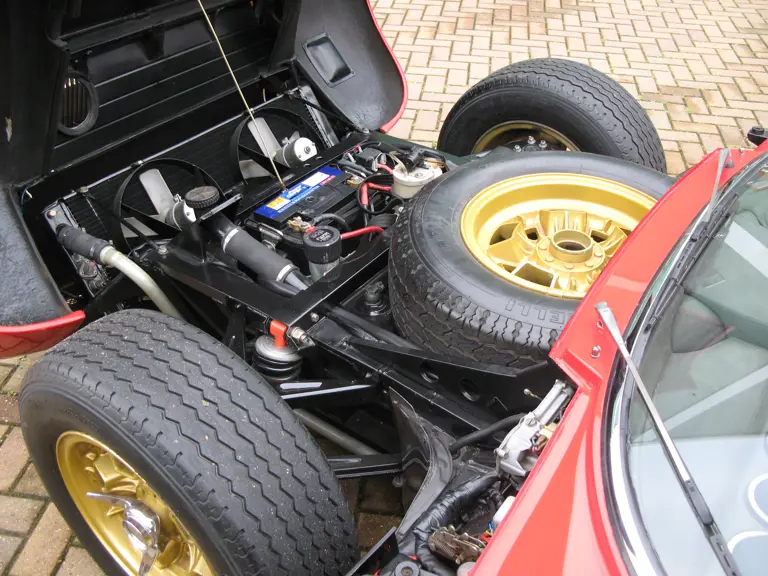
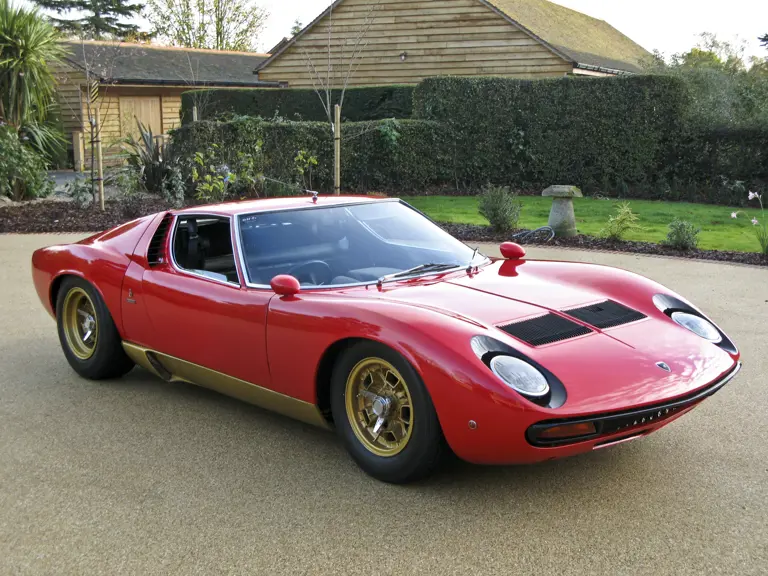
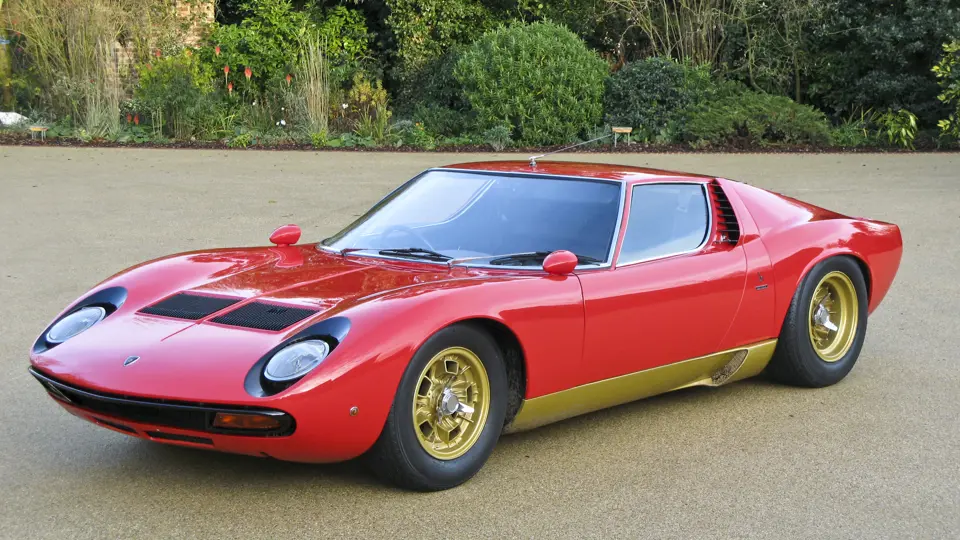
 | London, United Kingdom
| London, United Kingdom

